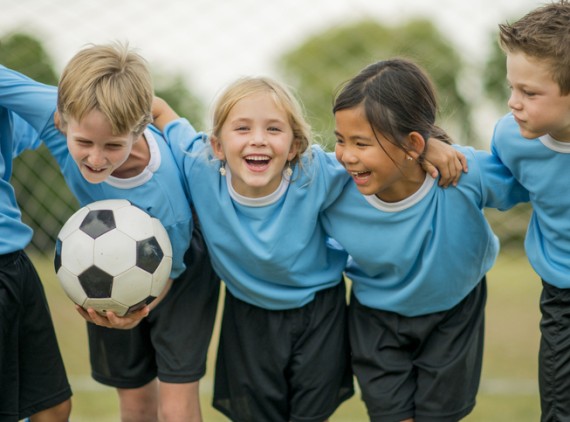Living in Arizona has many perks, but exercising during the height of summer can be tricky for even the fittest athlete. Before starting sports, your child should have a physical exam at their pediatrician’s office. During the physical, the doctor will review your child’s medical history— including any medications they are currently taking—perform an exam, and make sure it is safe for your child to participate in sports. If you do not have a pediatrician, Phoenix Children’s Pediatrics has locations throughout the valley to better serve your family.
During the hot and humid summer months, children are at risk for developing a heat-related illness. Heat-related illness is a term that includes several different conditions, including heat cramps, heat exhaustion and exertional heat stroke.
Heat cramps are a mild heat illness where muscles stiffen and clinch. Generally, they occur after a child has been exercising and has lost fluids from sweating.
Heat exhaustion is more severe than heat cramps. Heat exhaustion occurs when children continue to exercise or play after they start experiencing the effects of the heat. Symptoms of heat exhaustion may include:
- Headache
- Nausea
- Weakness
- Unsteadiness
- Dizziness
Exertional heat stroke (EHS), or over-effort in hot, sunny conditions, is the most serious type of heat illness and is a medical emergency. If a child loses consciousness, is behaving strangely, or seems confused, they may be suffering from heat stroke.
Exertional heat stroke is an emergency, and you should call 911 right away.
- The treatment for heat illness is to cool the child as quickly as possible. For heat cramps or heat exhaustion, this may mean moving the child to a shaded or preferably indoor area. Remove extra clothing, provide cold fluids to drink, and apply cold towels or use fans if available. Older athletes who practice during the summer, such as high school football players, may have cooling tubs on site. These tubs are used to lower the body temperature when an athlete has suspected heat stroke.
- Prevention is the best way to avoid heat illness. One of the ways to combat the heat is by staying well-hydrated before, during and after exercise. Children 9-12 years old should drink 3 to 8 ounces of liquid every 20 minutes during activity. For teens, we recommend 1-1.5 liters of liquid per hour during activity. It is also important to keep water or other liquids within reach and for children to take frequent breaks to rehydrate during activity.
- Another way to help prevent heat illness is through a process called acclimatization. This gives children and teens a chance to become used to exercising in the heat. The Arizona Interscholastic Association (AIA) recommends a 14-day period of acclimatization for sports like football. Athletes also need time to rest and recover between bouts of exercise, especially if they have more than one practice or game on the same day.
In addition to the strategies noted above, sometimes practice needs to be modified to lower the risk of heat illness. For example, coaches may lower the intensity or length of practice or allow more breaks during exercise. These breaks give athletes a chance to rehydrate and cool down before starting to exercise again. Practicing without uniforms or protective gear, canceling practices, or moving them to a cooler time of day are other ways to keep children safe during the heat. Children should also wear light-colored, loose-fitting clothing.
For more information on our sports medicine team or if you have a sports-related injury, click here.

